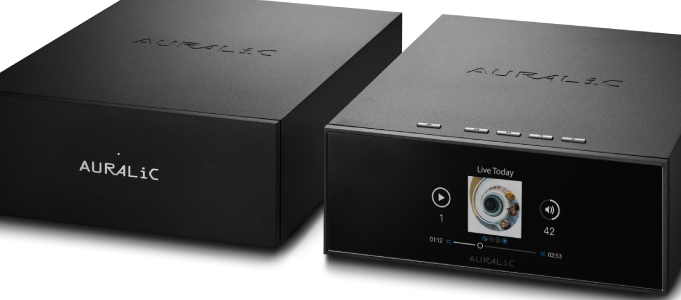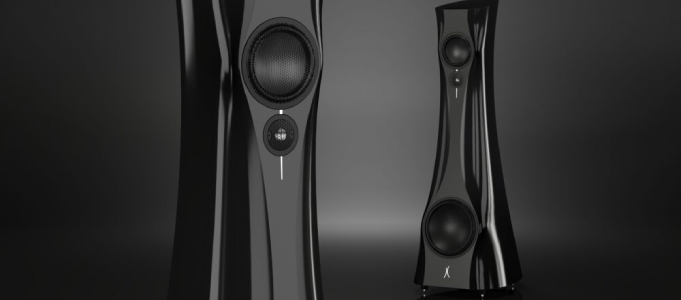Pioneer VSX-LX303 9.2 Channel AV Receiver Review

Entry level AV Receivers can often leave a lot to be desired when it comes to sound quality. Pioneer often buck this trend, and we see if its latest LX303 9.2 Channel AV Receiver stacks up.
Pioneer
VSX-LX303
9.2 Channel AV Receiver

AUD $1,499 RRP
In terms of sound quality, entry-level AV Receivers can often leave a lot to be desired. My last experience with Pioneer was in late 2017 when I reviewed the VSX-932. What I discovered, to my surprise was an AVR that was not only brimming with features but sounded pretty good for its $1,099 asking price.
That ‘thin, forward sound’, often the hallmark of AVR’s at this price-point wasn’t there, instead replaced by a sound that shared some of the pedigree of Pioneer’s higher-end LX range. Throw in the fact that the VSX-932 could often be had well below $1,000 and you had an absolute belter for the money.
When I received the VSX-LX303 for review, I must admit that I was left scratching my head. At $1,499 RRP, it’s $300 more than the VSX-934 (which replaces the VSX- 932), yet $600 cheaper than the SC-LX503, the first AVR in Pioneer’s more prestigious LX range.
The difference between the VSX-LX303 and VSX-934 was perhaps best explained by Pioneer's Australian distributor, Powermove, who suggested that I think of the of VSX-LX303 as a supercharged VSX-934. Or, I suppose if you’re a car enthusiast, a VSX-934 with a sports-pack.
Pioneer’s VSX-LX303 is a 9.2 channel AV Receiver quoted at being able to deliver 170 watts per channel (6 ohms, 1 kHz, THD 1 %, 1ch Driven). Yes, this figure is stated with only one-channel driven and a reasonable amount of total harmonic distortion, so I strongly suggest you take it with a grain of salt.
Quoting power ratings in this manner has become common practice amongst manufacturers. While I wouldn’t be overly perturbed by it, be aware that quoted power-ratings and real-world performance are two entirely different things.
As a 9.2 channel AVR, the VSX-LX303 supports Dolby Atmos®/DTS:X movie playback in either a 7.2.2 or 5.2.4 speaker configuration. That means two front speakers, one centre speaker, two side surrounds, two rear surrounds, two height speakers and up to two subwoofers in a 7.2.2 configuration. Or, in the case of 5.2.4, two front speakers, one centre speaker, two rear speakers, four height speakers and up to two subwoofers.
The VSX-LX303 also supports True HD/Dolby Digital Plus, DTS-HD Master Audio/DTS-HD High-Resolution Audio/DTS 96/24/DTS-ES/DTS-HD Express, and DTS:X/DTS Neural. It also comes with Pioneer’s MCACC room correction software, which includes Phase Control, Subwoofer EQ and Multi-point Standing Wave Control.
A comprehensive range of networking features is supported, including: including Amazon Music, Spotify, Deezer, Tidal, Pandora, Chromecast, DTS Play-Fi, Fire Connect, Internet Radio, Apple AirPlay Certification, Flare Connect for Multi-room Audio and will work with Google Assistant.
Naturally, now living in a 4K world, all, save two of its HDMI inputs are HDCP 2.2 compliant (4K/60p/4:4:4/24-bit, 4K/24p/4:4:4/36-bit, 4K/60p/4:2:0/36-bit), with HDR10, HLG, BT. 2020 and Dolby Vision compatible, with 4K upscaling.
The VSX-LX303’s list of features is rounded out with Hi-Res Audio File Playback via USB/Network, Up to 192 kHz/24-bit ALAC*6, AIFF, FLAC*6, WAV (RIFF)*6 and 5.6 MHz DSD*7 andDolby® TrueHD*8.

WHAT’S IN THE BOX
There’s no plastic or flimsy aluminium enclosures to be found here; the VSX-LX303 encased in a rigid black aluminium case.
The VSX-LX303 has a ‘stock’ AVR design, sharing much in terms of appearance with the VSX-934. The only thing that detracts from the otherwise clean appearance is the front-panel inputs and buttons. While it would be nice to have these hidden away behind a pull-down flap, this kind of design element is the purview of more expensive offerings.
The front of the VSX-LX303 has a faux brushed black aluminium finish, two large dials for input selection and volume flanking a reasonably sized LCD. Located just below the display is a multitude of buttons, controlling everything from menu navigation to sound modes.
Next to the power button are headphone and MCACC mic inputs, with the right-hand side providing HDMI, USB and a Mini Stereo Jack input.
The back of the VSX-LX303 offers six HDCP 2.2 HDMI inputs, four of which are assignable and two HDMI outputs, one of which is HDCP 2.2 and ARC compatible. The VSX-LX303 doesn’t, however, offer EARC which is becoming more commonplace in modern AV receivers.
There’s a reasonable amount of inputs here for the money, assignable optical (x2) and coaxial inputs, five analogue audio inputs, two composite video inputs, component video inputs, two subwoofer inputs, zone 2 (stereo), IR input and output, RS-232C control and two 12 volt triggers.
The speaker binding posts, of which there are 18, are of reasonable build quality for the money. However, they’re laid out in a ‘top to bottom’ configuration, rather than a side to side where the binding posts sit next to one another.
The benefit of the latter type of configuration is that it provides both more space to connect the speaker cables and there’s less chance of the wires accidentally contacting one another. Add to this that the binding posts are crammed rather tightly next to one another means there’s not a lot of space to work with.
Also included in the box is the MCACC calibration microphone and remote. The remote is identical to the remote that was introduced with the VSX-932 and keeps buttons to a minimum. While many of the buttons found on typical AVR’s are missing, these been relegated to the onscreen menu and fall more into the camp of ‘set and forget’ controls.
The overall build quality of the VSX-LX303 is on par for its cost, the exception being the quality of the case, which is a definite step-up at this price-point.

SETUP
The VSX-LX303 is a breeze to set up. I chose the 5.2.2 configuration that I typically use in my home theatre.
Lack of room around the speaker binding posts aside, connecting speakers and source devices are relatively straightforward, with clearly marked inputs.
In terms of its onscreen menus, Pioneer's is on point with menus that are both clean and logically laid out. One of the often more difficult setup aspects is choosing the correct speaker template for your configuration. In this regard, both the onscreen menu and instruction manual (online variety only) provided clear and concise instructions.
After a quick test to ensure the speakers were connected correctly, I connected the MCACC microphone and let the automated calibration process take control.
MCACC stands for Pioneer’s Multichannel Acoustics Calibration System. Simply place the supplied microphone on a tripod in the primary listening position and follow the onscreen prompts. MCACC produces a series of test-tones that will detect the size of your speakers, their distance from your central listening position, and room correction via DSP based on your listening environment.
Just like every other room correction system I’ve used, MCACC did incorrectly set my front left and right speakers to large, however, this is easy enough to change in the setup menu. Like the VSX-932, the VSX-LX303 has limited options in regards to crossovers; however, it’s to be expected at this price-point.
The VSX-LX303 does offer dual subwoofer outputs. However, the signal is the summed value of both subs, with both room and level correction applied accordingly. If you plan on using dual subwoofers, it’s worth the few extra dollars to purchase a sound pressure level meter to level match your subs.
The VSX-LX303 was amongst the easiest to set up of any AV Receivers I’ve reviewed, regardless of price-point.

PERFORMANCE
The VSX-LX303 was tested with a range of different UHD discs, including Blade Runner 2049, Dunkirk, Hunter Killer, Mad Max Fury Road, Man of Steel, Solo, and of course The Wolverine on Blu-ray.
Interestingly, director, Christopher Nolan eschews the use of immersive audio formats such as Dolby Atmos and DTS: X, choosing to mix his films in 5.1. If however, you’ve heard Dunkirk you’ll know what I mean when I say that Dunkirk offers one of the best soundtracks currently available.
With Dunkirk loaded I had the roar of Spitfires and Meschershmits whizzing around my listening room in no time. The VSX-LX303 turned in a dynamic performance, machine gun fire and explosions having a decent sense of impact.
The strong dynamics that the VSX-LX303 exhibited was underpinned with strong bass. The only caveat being that MCACC’s Subwoofer EQ wasn’t able to muster the same level of control over my subs as Audyssey Sub EQ.
The same observations were made again with Blade Runner 2049, in which the VSX-LX303 was able to reproduce a decent sized sound-stage in my listening room. While it didn’t offer the last word in performance in this regard, the VSX-LX303 is one of the better performers I have heard for the money.
Switching to Hunter Killer the VSX-LX303 handled the submarine battle with a deft touch, the front to back pans of torpedoes exhibiting a good sense of placement throughout my listening room.
While not being amongst the more underwhelming soundtracks that Disney has produced of late, Solo is still far from being the most dynamic of Dolby Atmos soundtracks. Here the VSX-LX303 performed admirably, turning in another detailed performance with a solid soundstage, which captured all of the background detail as Han and Lando gamble for the Millenium Falcon.

CONCLUSION
As it turns out, describing the VSX-LX303 as a ‘super-charged’ VSX-932 is the best way to describe the performance of the VSX-LX303.
In terms of power, it’s a definite step-up on its little brother, while not hitting the pedigree of the SC-LX range, there's no doubt it shares a portion of it.
Matched with suitable speakers, the VSX-LX303 is an excellent performer, capable of delivering a dynamic and engaging home theatre experience.
Better yet, match the VSX-LX303 with speakers that err more on the efficient side, and it will take things to a whole new level again.
For more information visit Pioneer.
Tony O'Brien
As the owner of Adelaide based ‘Clarity Audio & Video Calibration’, Tony is a certified ISF Calibrator. Tony is an accomplished Audio-Visual reviewer specialising in theatre and visual products.
Posted in:Home Theatre Amplifiers AV Receivers & Processors
Tags: pioneer powermove monaco
JOIN IN THE DISCUSSION
Want to share your opinion or get advice from other enthusiasts? Then head into the Message Forums where thousands of other enthusiasts are communicating on a daily basis.
CLICK HERE FOR FREE MEMBERSHIP
Trending
applause awards
Each time StereoNET reviews a product, it is considered for an Applause Award. Winning one marks it out as a design of great quality and distinction – a special product in its class, on the grounds of either performance, value for money, or usually both.
Applause Awards are personally issued by StereoNET’s global Editor-in-Chief, David Price – who has over three decades of experience reviewing hi-fi products at the highest level – after consulting with our senior editorial team. They are not automatically given with all reviews, nor can manufacturers purchase them.
The StereoNET editorial team includes some of the world’s most experienced and respected hi-fi journalists with a vast wealth of knowledge. Some have edited popular English language hi-fi magazines, and others have been senior contributors to famous audio journals stretching back to the late 1970s. And we also employ professional IT and home theatre specialists who work at the cutting edge of today’s technology.
We believe that no other online hi-fi and home cinema resource offers such expert knowledge, so when StereoNET gives an Applause Award, it is a trustworthy hallmark of quality. Receiving such an award is the prerequisite to becoming eligible for our annual Product of the Year awards, awarded only to the finest designs in their respective categories. Buyers of hi-fi, home cinema, and headphones can be sure that a StereoNET Applause Award winner is worthy of your most serious attention.


_mma_mmp_fr@171102@l__thumbnail_gallery_image.jpg)
_mma_mmp_ls@171102@l__thumbnail_gallery_image.jpg)
_mma_mmp_re@171117@l__thumbnail_gallery_image.jpg)
_mma_mmp_rs@171107@l__thumbnail_gallery_image.jpg)
_shadow__thumbnail_gallery_image.jpg)




